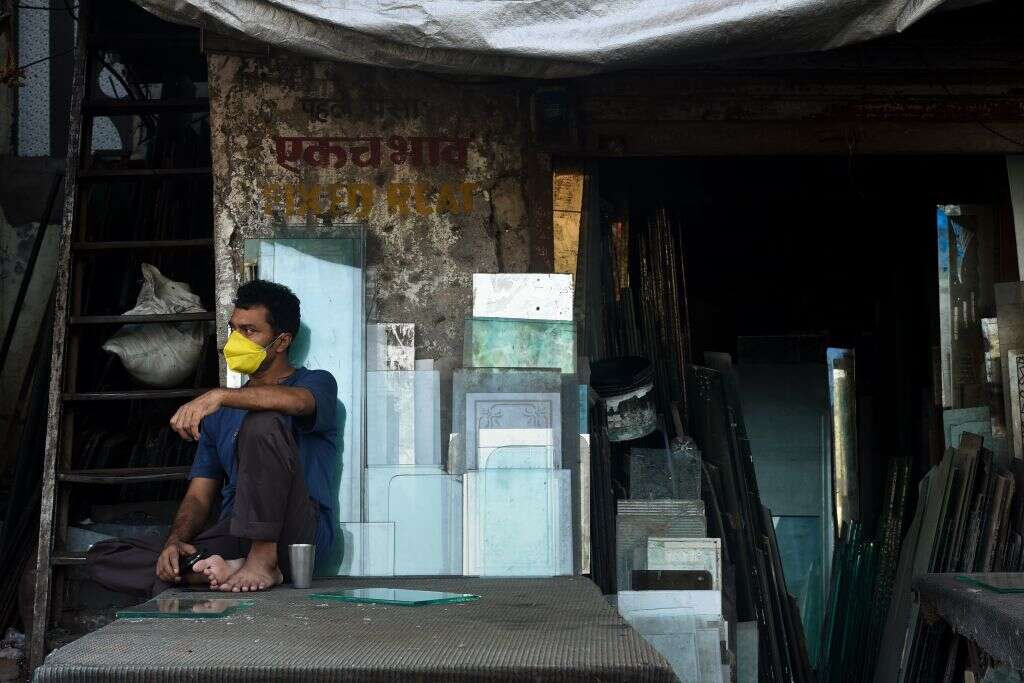
For the 1.2 billion people around the world who live in densely populated slums, crowded conditions and scarce public services threaten to make the Covid-19 pandemic especially devastating.
An April study from Brookings India shows that these communities are already becoming a focal point of the pandemic. Researchers analyzed the “containment zones” that the Indian government set up in areas with Covid outbreaks, and overlaid that data with maps of slum communities. Their findings demonstrate that Covid-19 outbreaks in Mumbai, one of the world’s largest cities, are based in or near slum communities.
“The fact of the matter is that slums are being disproportionately impacted,” says Shaonlee Patranabis, research assistant at Brookings India and one of the authors of the study. “No containment zone’s epicenter was further than 800 metres from the nearest slum.”
Many residents of these neighbourhoods already face interlocking health crises. Slums are often located in areas of intense air pollution, a problem that can be exacerbated by indoor cooking with biomass fuels in windowless homes. Lung diseases such as tuberculosis are already prevalent, and in some areas – especially in South Africa – higher rates of HIV/AIDS could compound the severity of Covid-19. Limited access to fresh water and toilets is a grave problem in the best of times, and it’s only more dire amidst a pandemic.
“Social distancing is impossible in these conditions,” Patranabis says. “In a lot of slums, the water supply is one tap for 200 households. They have to queue up for the water that they need.”
Mumbai is the financial capital of India, but 42% of the population lives in communities with little access to basic services like fresh water, toilets, or health care. Residents are mostly employed in the informal economy, and depend on their daily wages for food, making the economic shutdown hellishly difficult to navigate.
As the pandemic blazed across the globe, policymakers in Mumbai decided to establish containment zones as a means to stymie the spread of the disease. Residents within a zone’s boundaries are placed in quarantine and under police surveillance. They are then tested for Covid-19, and those who prove to be positive are subject to contact tracing. On 31 March, there were 141 containment zones in the greater Mumbai area, increasing to 243 by 5 April and 490 by 14 April.
“We are a resource strapped country only able to do lockdowns and trace contacts,” said Patranabis. “There are cases where a single house is a containment zone, and where an entire lane is a containment zone.”
There have been successes with the containment zone model. Another outbreak in the Kasaragod district of Kerala – a coastal state with a long history of progressive governance and public health investment – was rapidly and successfully brought under control.
But in slums, the approach will be challenging to implement.
In many cases, residents have no legal property rights. Dwellings are usually densely populated and built from an eclectic array of materials. Patranabis describes units in Mumbai’s Dharavi, Asia’s largest slum, where five people live in four-foot-by-eight-foot dwellings, sleeping in shifts to manage the space constraints.
Conditions in these sections of Mumbai are mirrored in similar communities elsewhere, from the favelas of Brazil to the shanty towns of South Africa. Outbreaks have already been documented in Pakistan’s Orangi Town and Brazil’s Rocinha.
“Many of these communities don’t have real clean water sources, but one of the most important safety measures is to wash your hands frequently,” said Lee Riley, a professor of infectious diseases and vaccinology at the University of California Berkeley School of Public Health.
“This virus can shed in stool, [so with limited access to toilets] it could spread in these communities not just through respiratory routes but fecal contamination of water and food.”
An April 24 paper published in the Journal of Urban Health, which Riley contributed to, argues that an array of government interventions are required, from eviction moratorium to direct income support and food distribution.
Some governments have begun pursuing these policies. Brazil and India have issued income support for their poorest residents. Some jurisdictions in India have banned evictions during the pandemic. The Municipal Corporation of Greater Mumbai is installing additional fresh water pumps in its slum neighbourhoods, Patranabis reports.
But residents and observers of these neighbourhoods fear that Covid will devastate the slum communities that house many of the world’s poorest people. The history of government interventions in such areas is mixed, at best.
“Informal settlements are essentially abandoned by urban elites, which means they rarely receive the care and attention they need,” writes Robert Muggah, research director of the Brazilian think tank the Igarapé Institute. “Governments must be sensitive to the fact that there may be low levels of trust in informal settlements, as well as alternate systems of power and influence – including criminal groups.”
And although Covid spread across the globe on airplanes and cruise ships, borne by the wealthiest residents of the world, experts like UC Berkeley’s Riley say it is likely to harrow the world’s poorest for far longer.
“All respiratory pathogens are very successful in crowded, densely populated environments,” Riley says. “The trajectory of a lot of these diseases is that they end up in the slum communities of the world and then they linger.”
Jake Blumgart is a staff writer for CityMetric.






